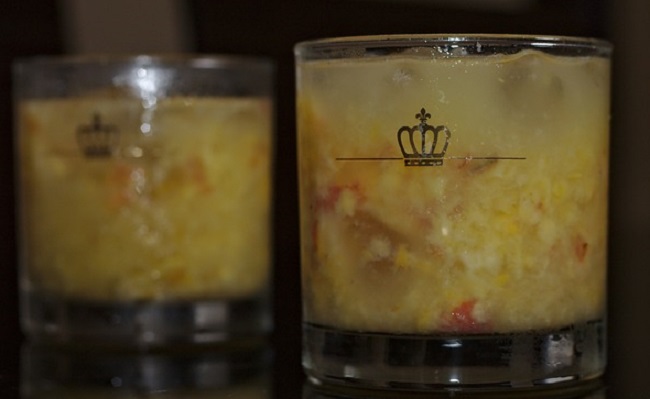Travel By The Glass:
Seven Cocktails From Around The World
We may not be able to travel, listen to live music or eat in restaurants, but we can always drink. Here's a look at some famous cocktails, and the stories surrounding their origins from all over the world.
The Bloody Caesar (Calgary, Alberta Canada)
The story goes that back in 1969, the Calgary Inn asked bartender Walter Chell to create a new cocktail to celebrate the opening of a new restaurant inside the hotel. Taking his inspiration from the restaurant's Italian cuisine, it took him fully three months to come up with the Caesar - as inspired by spaghetti alla vongole, which is essentially pasta with clam sauce.
Chell crushed clams for their juices, mixing it with tomato juice and spices. The classic version includes clam nectar - nowadays more often substituted by Clamato juice - Worcestershire sauce and celery salt. In an interview, Chell said he also added a dash of oregano.
 |
| Image by Alexas_Fotos (Pixabay) |
The Mojito (Cuba)
It's no surprise that Cuba, a major producer of sugar cane from the 18th century, would choose rum as its national spirit. It's not clear who created the mojito, with crushed mint leaves, lime juice, and a bit of sugar, but its origins are historic. Some stories say that English pirates created it to make rum more drinkable. In some accounts, it is linked directly to Sir Francis Drake, the British naval captain, who sailed to the Caribbean in the 1500s to recolonize the Spanish colonies in the region. With the lime juice, it was said to ease seasickness, and prevent scurvy.
Others claim it was crafted by African slaves who worked in the sugar cane fields. Ernest Hemingway was said to be a huge fan of the mojito. Local legend has it that in 1939, on a visit to Havana, he declared his love of mojitos in the form of graffitti scraled on the walls of his fave bar.
Pimm's Cup (London, England)
Pimm's Cup is a very popular summer drink in the UK. It was invented by James Pimm, a fishmonger and owner of an oyster bar in London. His birthday is unknown, but he died in 1866. He created a gin-based liqueur not as a cocktail, but a digestive aid for the patrons scarfing down his oysters. Nowadays, a Pimm's Cup includes chopped fruit (typically blueberries, blackberries, strawberries, or seasonal fruit like apples and pears, with orange slices) with mint, lemonade, and of course Pimm's liqueur.
Singapore Sling (Singapore)
The Singapore Sling was created by Ngiam Tong Boon (嚴崇文), a Hainanese bartender working at the tony Raffles Hotel in Singapore. The hotel was a favourite of luminaries in the Colonial era, and was once described by writer W. Somserset Maugham as standing “for all the fables of the exotic East.” The classic recipe calls for gin, cherry brandy, Cointreau, Bénédictine, Grenadine, pineapple juice, fresh lime juice, and Angostura bitters.
The story goes that the cocktail was created as a socially acceptable cocktail for the bored wives of rich colonials to sip on during the long hot afternoons - openly drinking liquor being a non-starter for upper class women of the era.
 |
| Image by Luis Wilker Perelo WilkerNet (Pixabay) |
Caipirinha (Brazil)
Some people say that the caiprinha was first develop on the farms of the state of São Paulo, where it was enjoyed during large parties and gatherings. Other stories claim it was created during the Spanish flu outbreak of the earth 19th ccentury in Brazil, since the limes in the recipe provide a super dose of Vitamin C.
Whatever its origins, the Caipirinha is composed of cachaça, a rum-based liquor, muddled limes, and raw sugar, which gives it a golden colour. Sometimes, as in the image, it also includes passion fruit.
 |
| Image by Alexas_Fotos (Pixabay) |
Pisco Sour (Chile? Peru?)
The origins of the Pisco Sour have been the subject of an international dispute between Chile and Peru for more than a century. In Peru, where the cocktail has was popularized at the Gran Hotel Bolívar in Lima during the early days of the 20th century, it has become the national drink.
There, the preferred history is that it was created by bartender Victor Vaughen Morris, an immigrant from Utah, who first crafted it as a riff on the whisky sour. The drink is made with Pisco, an amber-coloured brandy made in the wine growing regions of both Chile and Peru, along with egg white, bitters, and lime.
Tom Collins (New York City, USA)
Some credit the classic cocktail to bartender John Collins of the London Hotel in NYC back in the early 1800s. A more colourful story - and one that is backed up by newspaper accounts of the day - says it was created as the result of a popular hoax that spread throughout the Big Apple in 1874.
It goes like this: you're a young dude of the day, and you run into some friends on the street. They tell you someone's been bad mouthing you at the bar down the block - a guy by the name of Tom Collins. You march down to the bar to confront Tom, but the bartender, who's in on the joke, tells you he just left for another bar around the corner. So you keep going and going all over town, while your good friends snicker at you and have a drink.
As one newspaper reported, the hoax caused “frantic young men to rush wildly through the streets of the city on Saturday hunting for the libelous Tom Collins.” It seems that eventually, one or more of those savvy bartenders thought of a better answer than to send them to another bar - the classic gin and lemon drink we still know and love.




Comments
Post a Comment